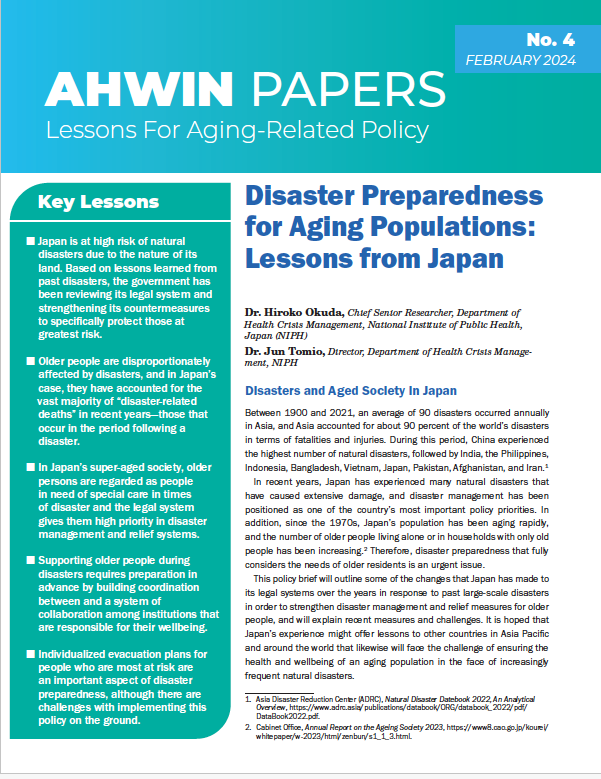The Asian region has historically been prone to frequent disasters due to seismic activity and other factors, and climate change has only increased the region’s proclivity to damaging typhoons and flooding. At the same time, many of the countries in the region are undergoing a rapid aging of their populations, and by 2050, there are expected to be more than 900 million people aged 65 or older in Asia. Older people are usually the most severely impacted by disasters, and they represent the majority of fatalities both from the disaster itself and from inadequate facilities, services, and resources in the aftermath of the disaster. In light of these facts, it is important to consider how countries and communities can mitigate the impact of disasters on older people and other vulnerable populations.
In this edition of the AHWN Papers, two experts from the Department of Health Crisis Management at Japan’s National Institute of Public Health share their insights into the lessons that Japan has learned from its experience with large-scale disasters and how it is working to protect its older residents. They explain the legal frameworks that Japan has instituted in recent decades to address this concern and how those are being implemented at the local level.


